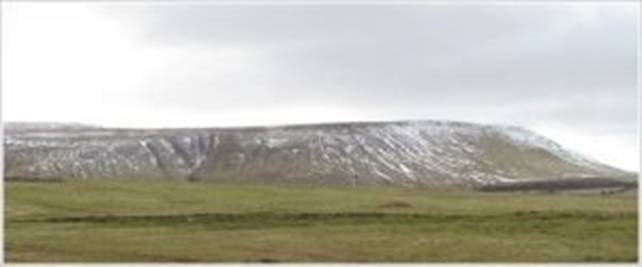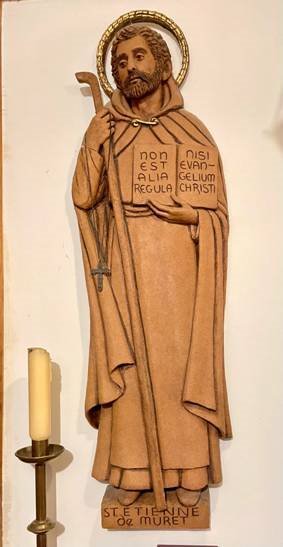Title: | Digital Archive: Craswall Grandmontine Society Website Archive - Home Page |
Date: | 2023 |
Title: | Digital Archive: Craswall Grandmontine Society Website Archive - Home Page |
Date: | 2023 |
Home Page

Hay Bluff, rising to 2,220 ft. To the left Crib y Garth, ‘the Cat’s Back’, and Black Hill, 2,100ft
Craswall priory was a monastery of the austere Grandmontine order. It is unique on three accounts:
|
| It is the only site in England where the characteristic architecture and ground plan of a Grandmontine priory can be examined in detail. Craswall priory thus provides visitors with clear visual evidence as to the life of monks of one of the most austere of Europe’s medieval monastic orders. Two other Grandmontine priories were founded in England. At the first, at Escomb (Grosmont, 8 miles west of Whitby), no vestiges of the priory remain above ground. The other, at Alberbury west of Shrewsbury, was built for the Augustinians who rejected the site, a mile or so from the Welsh frontier. With a rectangular, not apsidal, east end it therefore does not conform to the Grandmontine plan. At some 1,240ft, Craswall is by far the highest of all English monastic sites. Its nearest rival, the Augustinian priory at Shap, is at a mere 800ft. Furthermore Craswall is overlooked by the Welsh frontier along Hay Bluff, rising to 2,200ft. The austerity of life at Craswall is amply demonstrated by these facts. Craswall is also unique in a European context, for it is the only Grandmontine priory where one can see the ruins of two churches. Until recently the smaller one to the south was referred to, on the authority of Sir Alfred Clapham and the Royal Commission on Historical Monuments, as a sacristy, by others as a ‘south chapel’. This was not based on archaeological evidence. Only in 1962 did Cecil Wright excavate part of this so-called chapel and expose an apsidal east end (Plan 5 and Figs 28-9 ) as well as an aumbry, twin piscinae and Grandmontine reveals. Thus what Clapham had described as a ‘sacristy’ was in fact Craswall’s first church. This is confirmed by the position of the passage of the dead immediately to its south (marked on Plan 5).
As Carole Hutchison makes clear in Current Archaeology in 1991, ‘we have an outstanding responsibility to arrest the deterioration of this [truly] unique monastic monument so that all our and future generations will be able to appreciate it’. |
Posted on June 27, 2017
Ref: cgs_cra_0002

